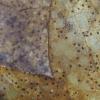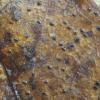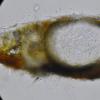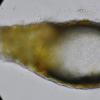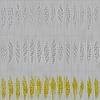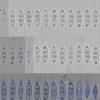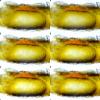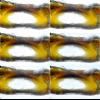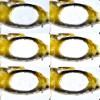
15-12-2025 21:11
 Hardware Tony
Hardware Tony
Small clavate hairs, negative croziers and IKI bb

15-12-2025 15:54
 Johan Boonefaes
Johan Boonefaes
Unknown anamorph found on the ground in coastal sa

15-12-2025 15:48
 Danny Newman
Danny Newman
Melanospora cf. lagenaria on old, rotting, fallen

15-12-2025 07:05
 Danny Newman
Danny Newman
Pseudosclerococcum golindoiô (det: Zotto)near Cosb

15-12-2025 11:49
 Danny Newman
Danny Newman
ITS sequences from the following two collections B

15-12-2025 07:09
 Danny Newman
Danny Newman
indet. Rutstroemiaceae sp. on unk. fallen leavesMc

15-12-2025 12:34
 Danny Newman
Danny Newman
indet. Rhytismataceae on oak leafnear Purchase Roa

09-12-2025 12:06
 Andgelo Mombert
Andgelo Mombert
Bonjour,Je recherche l'article concernant Hypobryo

Good afternoon
Do you know what this "Pyreno" could be? In Acer leaves, surely A. monspeliensis. They are soft black dots, bulging when hydrated, tiny, which occupy the entire width of the leaf, as you can see in the photos. It doesn't look like a classic Pyreno, it probably isn't.
The asci have a curious apical apparatus, very marked, but it is inamyloid. All asci I've seen have that irregular shape on the walls, I assume they're alive, although it looks like they're not. Spores are 2-celled, with 4 large LBs, 2 per cell, and hyaline conical appendages at the ends.
Orienting myself for the spores I have gone to the genera Anisomeridium, Naetrocymbe, Lophiostoma, Vaginatispora, Lophitrema, Pseudocoleophonea and Wettsteinina, but I don't see anything like that.
These are the measurements:
Spores
(15.5) 16.1 - 17.4 (18.3) û (4.1) 4.7 - 5.3 (5.6) ôçm
Q = (3) 3.1 - 3.6 (4) ; No. = 38
Me = 16.7 û 5 ôçm; Qe = 3.4
Asci
(60.1) 60.6 - 72 (83.9) û (10.8) 11.8 - 14.5 (15.6) ôçm
Q = (4.2) 4.4 - 5.7 (6) ; No. = 42
Me = 67.1 û 13.3 ôçm; Qe = 5.1
Thank you so much.
Miguel û. Ribes

A photo of the asci would be very helpful here.
Are the asci swimmig in the perithecial centre? I ask this because the asci seem to have a Diaporthe-like apical ring, spores are Diaporthe-like too. So we have perhaps to look for your collection in the Diaporthales/Sordariomycetes instead of the Dothideomycetes.
Regards,
Bernard
I think, as Bernard, says, you should look at the Diaporthales, the strongly refractive inamyloid apical apparatusô and the sharply cut asci indicate this.

The fifth photo shows asci in water, iki and in blue ink.
I think asci are free swimming in the perithecium. I will find in Diaporthales.
Thanks a lot

I will try to make sections now in dry-state. In fresh-state (fig. 2, 3) it is very soft and crushes.

Leaf-inhabiting genera of the Gnomoniaceae, Diaporthales.ô M.V. Sogonov, L.A. Castlebury, A.Y. Rossman, L.C. MejûÙa and J.F. White. 2008
A systematic account of the genus Plagiostoma (Gnomoniaceae, Diaporthales) based on morphology, host-associations, and a four-gene phylogeny.ô L.C. MejûÙa, L.A. Castlebury, A.Y. Rossman, M.V. Sogonov and J.F. White, Jr. 2011.
I don't find information about L. bavaricum.
Thank you.
In-depth studies should be carried out, as Sogonov, Meijia and Walker have been able to do in certain groups of these Gnomoniaceae.
The situation is similar for species on Euphorbia or Geranium: perhaps an updating needs to be made using molecular biology, by bringing in new species.
Alain

I see that it is another group in which it is necessary to deepen, including molecular studies. My samples are available to whoever is needed.
I still can't find documentation on Plagiostoma bavaricum beyond the original description of Hypospila bavarica, I would appreciate any documentation on the species.
Thank you.
Gnomoniaceae but it cannot be placed in a genus. As Alain says, more studies would be needed to try to better define this or these species.


ô I will find it again sometime.
Thanks Enrique
